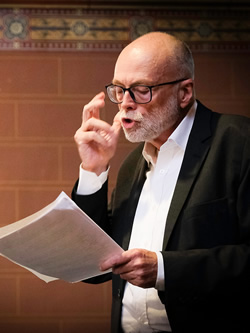Theo Dirix is an author and taphophile. He has successively held the office of Consul in Embassies of Belgium in Tanzania, Saudi Arabia, Jordan, Canada, the United Arab Emirates and, since 2011, Greece. Before 1989, he worked for the Flemish Radio 3 and commented on (mainly Moroccan) literature. He is constantly writing travel stories of his visits to cemeteries and graves.
Theo Dirix became directly involved in the quest to find the grave of Andreas Vesalius on the island of Zakynthos in Greece and as the Consul of Belgium was critical to the realization of the 2014 Vesalius Continuum meeting on the same island.
The same year (2014) Theo Dirix published his book "IN SEARCH OF ANDREAS VESALIUS; The Quest for the lost grave", a detailed story of the process of zeroing on the location of the grave, the politics of the island tourism, and the history and research on Vesalius' death.
Andreas Vesalius did not die returning from Jerusalem on a deserted beach in the Ionian Sea, the only victim of a shipwreck. He did not travel to the Holy Land under pressure of the Inquisition, neither as penance nor escape: he went there as a devout pilgrim with the support of his employer. Weakened by his stay and by his unfortunate return journey, he died in Zakynthos where he was buried in the Santa Maria delle Grazie Church. This and many other details are found in his book and research.
Thanks to Theo Dirix for collaborating with "Medical Terminology Daily" with the article "In Search of Andreas Vesalius, The Quest for the Lost Grave - The Sequel" which he co-authored with Pascale Pollier and Dr. Sylviane Déderix. Here is a link to all the articles in this website where Theo is mentioned.
Following are some links to Theo Dirix's articles on the Internet:
The Quest for Andreas Vesalius' Grave
Visiting a cemetery
Theo Dirix at Academia.edu




